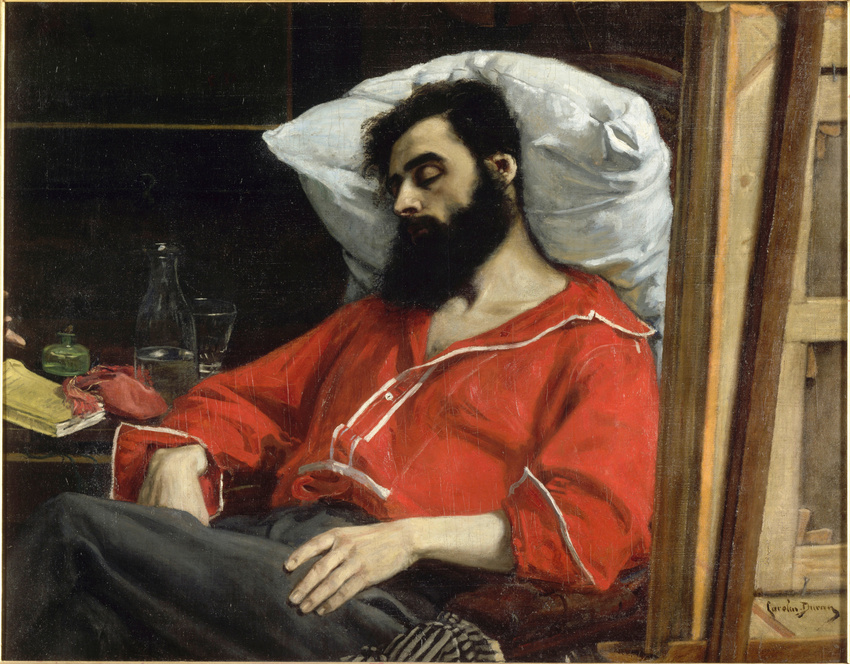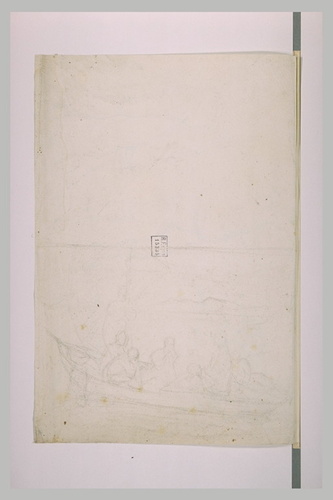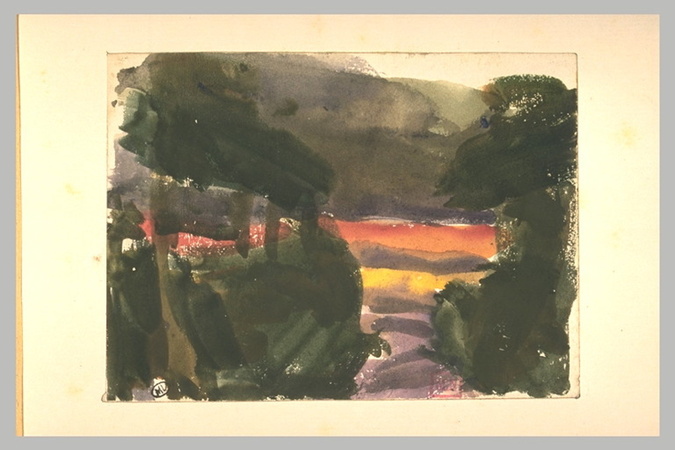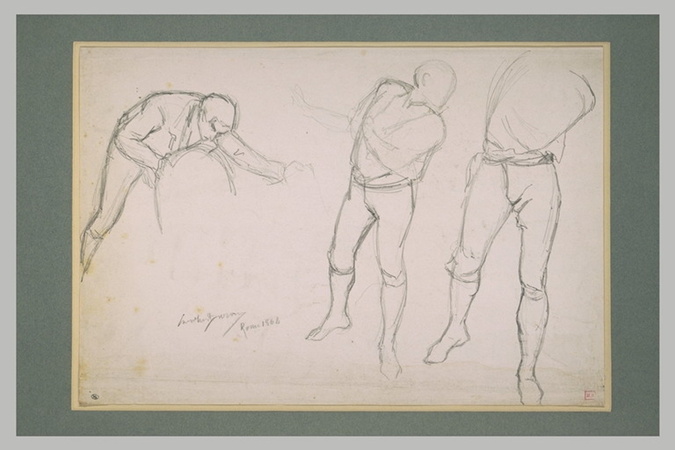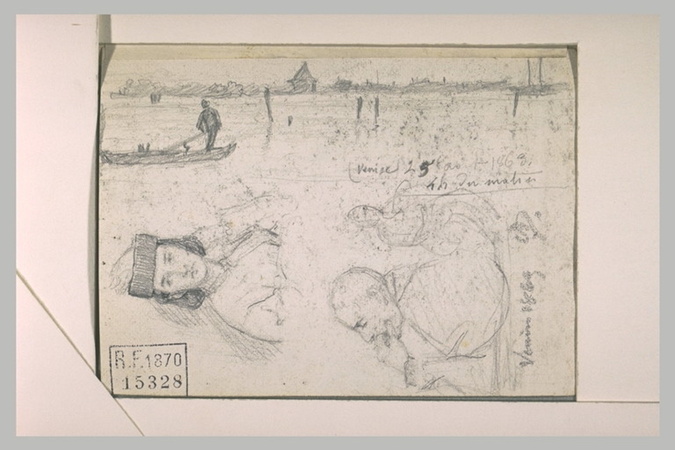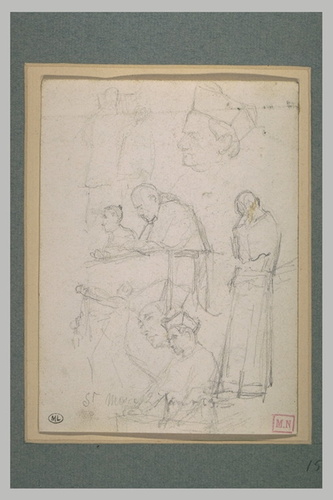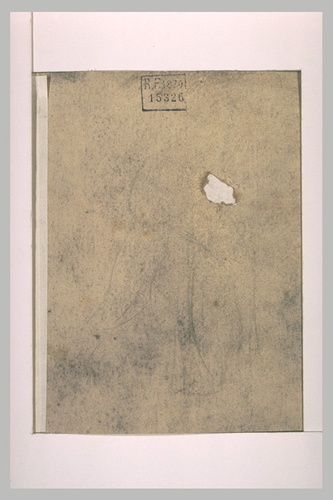Le Convalescent
This painting perpetuates the memory of the painting Carolus-Duran submitted to the Wicar de Lille competition, entitled Visiting the Convalescent. Jean-Baptiste Wicar (1762-1834) was a Neo-Classical painter, collector and benefactor of the Musée de Lille, who started a competition for artists to demonstrate their skills in perspective, anatomy, painting and expression. Carolus-Duran won the prize in 1861 with Visiting the Convalescent, enabling him to obtain a grant and travel to Italy.
In spite of this success, he was unhappy with his painting and cut it up, keeping only two fragments: a white dog and this Convalescent. There is also a variant on this subject, The Sleeping Man, which the artist donated to the Musée de Lille in 1862.
This work fits into the Realist movement, a style promoted by Zacharie Astruc, a friend of Carolus-Duran, and also by the painters Fantin-Latour and Alphonse Legros who encouraged him in this direction. The influence of Courbet and his Wounded Man - which Carolus-Duran saw in 1855 in The Pavilion of Realism set up by Courbet within the Universal Exhibition - is striking. The way Carolus-Duran cut the painting, creating an unusual framing similar to that used by Degas, emphasises its modernity, and perhaps explains the artist's gesture. With its vigorous brushwork and striking colours The Convalescent is one of Carolus-Duran's most successful works.

